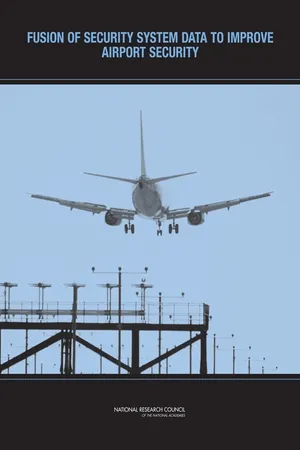
- English
- ePUB (mobile friendly)
- Available on iOS & Android
About this book
The security of the U.S. commercial aviation system has been a growing concern since the 1970's when the hijacking of aircraft became a serious problem. Over that period, federal aviation officials have been searching for more effective ways for non-invasive screening of passengers, luggage, and cargo to detect concealed explosives and weapons. To assist in this effort, the Transportation Security Administration (TSA) asked the NRC for a study of emerging screening technologies. This book - the fourth of four - focuses on data fusion as a means to significantly improve the ability of the existing suite of airport detection systems and access control systems to detect and prevent attacks. The book presents a discussion of the data fusion, an analysis of current data fusion efforts, and an assessment of data fusion opportunities for various airport security activities.
Frequently asked questions
- Essential is ideal for learners and professionals who enjoy exploring a wide range of subjects. Access the Essential Library with 800,000+ trusted titles and best-sellers across business, personal growth, and the humanities. Includes unlimited reading time and Standard Read Aloud voice.
- Complete: Perfect for advanced learners and researchers needing full, unrestricted access. Unlock 1.4M+ books across hundreds of subjects, including academic and specialized titles. The Complete Plan also includes advanced features like Premium Read Aloud and Research Assistant.
Please note we cannot support devices running on iOS 13 and Android 7 or earlier. Learn more about using the app.
Information
Table of contents
- COVER PAGE
- THE NATIONAL ACADEMIES
- COMMITTEE ON ASSESSMENT OF SECURITY TECHNOLOGIES FOR TRANSPORTATION
- NATIONAL MATERIALS ADVISORY BOARD
- Preface
- Acknowledgment of Reviewers
- Contents
- Figures, Tables, and Box
- In Memoriam
- Executive Summary
- 1 Introduction
- 2 Data Fusion for Security Operations
- 3 Current Data Fusion Endeavors
- 4 Opportunities for Data Fusion
- Appendixes